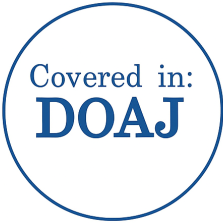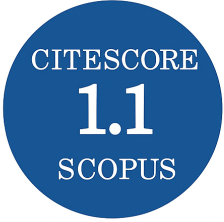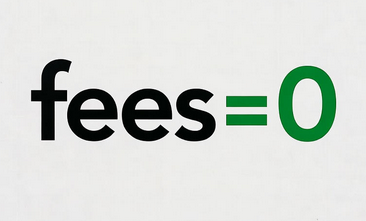From Old Ciphers to Modern Communications
DOI:
https://doi.org/10.3849/aimt.01281Keywords:
code, crypto–system, communicationAbstract
The security of the information transmitted, irrespective of the era and the channel selected, has always been one of the main concerns of those using various communication systems. This is particularly the case nowadays, when the Internet has made the mass distribution of any kind of information possible. Codes can be used to transmit data through various noisy channels and any errors that might occur can be corrected; it is therefore very important to design good codes with adequate parameters. This survey briefly outlines the evolution of the ways in which information has been collected, transmitted and used from the past to the present.
References
CIALDINI, R. B. Influence: The Psychology of Persuasion. HarperCollins, 1984, 334 p. ISBN 978-0-061-24189-5.
Social Engineering Defined [on-line]. [cited 2018-11-05]. Available from: https://www.social-engineer.org/framework/general-discussion/social-engineeringdefined.
SINGH, S. The Code Book-How to Make it, Break it, Hack it, Crack it. Delacorte Press, 2001, 263 p. ISBN 978-0-385-72913-0.
MARTIN, K. Everyday Cryptography. Oxford: Oxford University Press, 2012, 720 p. ISBN 978-0-198-78801-0.
FLAUT, C. and FLAUT, D. Cryptographic Systems Used in the Romanian Countries between the 15th – 19th Centuries. Asian Journal of Social Sciences & Humanities, 2015, vol. 4, no. 1, p. 109–117. ISSN 2186-8492.
WOBST, R. Cryptology Unlocked. Wiley, 2001. 557 p. ISBN 978-0-470-06064-3.
Encyclopaedia Britannica Online-2 [on-line]. [cited 2018-11-04]. Available from: https://www.britannica.com/place/ United-Kingdom/Elizabethan-society#ref483014.
BALS, S. The Humor Monastery. Bucharest: Meridiane Publishing House, 1965, 30 p.
MARES, A. Old English Writing and Culture [in Rumanian]. Bucarest: Academiei Române, 2005, 486 p. ISBN 978-3-598-20437-1.
Encyclopaedia Britannica Online-3 [on-line]. [cited 2018-10-05]. Available from: https://www.britannica.com/topic/cryptology/Cryptography#ref392519.
KLIMA, R. E. and SIGMON, N. P. Cryptology: Classical and Modern with Maplets. Boca Raton: CRC Press, 2012.
Encyclopaedia Britannica Online-1 [on-line]. [cited 2018-10-14]. Available from: https://www.britannica.com/ biography/Charles-Babbage.
SINGH, S. The Code Book: The Science of Secrecy from Ancient Egypt to Quantum Cryptography. London: Fourth Estate, 1999.
SCHAEFER, E. An Introduction to Cryptography [on-line]. Santa Clara: Santa ClaraUniversity, 2005, [cited 2018-10-14]. Available from: http://cgi.di.uoa.gr/~halatsis/Crypto/Bibliografia/Crypto_Lectures/ Schaefer_intro_crypto.pdf.
CHRISTENSEN, C. Cryptanalysis of the Vigenère Cipher: The Friedman Test [on-line]. MAT/CSC 483, 2015. [cited 2018-10-14]. Available from: https://www.nku.edu/~christensen/ 1402%20Friedman%20test%202.pdf.
Encyclopaedia Britannica Online-4 [on-line]. [cited 2018-11-05]. Available from: https://www.britannica.com/ biography/Samuel-F-B-Morse.
Encyclopaedia Britannica Online-5 [on-line]. [cited 2018-11-05]. Available from: https://www.britannica.com/ biography/Guglielmo-Marconi.
Encyclopaedia Britannica Online-6 [on-line]. [cited 2018-11-05]. Available from: https://www.britannica.com/ biography/Alan-Turing.
GROMOV, G. Roads and Crossroads of Internet History [on-line], 1995, [cited 2018-11-05]. Available from: http://history-of-internet.com/history_of_internet.pdf.
GRAHAM, F. Clash of the Titans: Email v Social Media [on-line], 2011, [cited 2018-11-05]. Available from: https://www.bbc.com/news/business-15856116.
KOBLITZ, N. A Course in Number Theory and Cryptography. Springer-Verlag, 2nd edition, 1994, 235 p. ISBN 978-0-387-94293-3.
CASE, M. A Beginner’s Guide To The General Number Field Sieve. Corvallis: Oregon State University, ECE 575, 2003, 19 p.
BUCHMANN, J. Introduction to Cryptography. Springer-Verlag, 2nd edition, 2004, 338 p. DOI 10.1007/978-1-4419-9003-7.
MALEK, M. Coding Theory-Binary Hamming Codes [on-line], 2015, [cited 2018-11-05]. Available from: http://www.mcs.csueastbay.edu/~malek/Class/Hamming.pdf.
MALEK, M. Coding Theory-Golay Codes [on-line], 2015, [cited 2018-11-05]. Available from: http://www.mcs.csueastbay.edu/~malek/Class/Golay.pdf.
LING, S. and XING, C. Coding Theory A First Course. Cambridge:Cambridge University Press, 2004, 222 p. ISBN 978-0-521-82491-9.
MULLER, D. E. Application of Boolean Algebra to Switching Circuit Design and to Error Detection. Transactions of the I.R.E. Professional Group on Electronic Computers, 1954, vol. 3, p. 6–12. https://doi.org/10.1109/IREPGELC.1954.6499441.
BAEZ, J. C. The Octonions. Bulletin of the American Mathematical Society New Series, 2002, vol. 39, no. 2, p. 145–205.
SCHAFER, R. D. An Introduction to Nonassociative Algebras. New-York: Academic Press, 1966, 165 p. ISBN 978-04-86688138.
ALAMOUTI, S. M. A Simple Transmit Diversity Technique for Wireless Communications. IEEE Journal on Selected Areas in Communications, 1998, vol. 16, no. 8, p. 1451–1458. ISSN 0733-8716, https://doi.org/10.1109/49.730453.
PUMPLUN, S. How to Obtain Division Algebras Used for Fast Decodable Space-Time Blocks Codes, Advances in Mathematics of Communications, 2014, 8 (3) : 323-342. https://doi.org/10.3934/amc.2014.8.323, [on-line], 2013, [cited 2018-11-05]. Available from: http://molle.fernuni-hagen.de/~loos/jordan/archive/iteralg/iteralg.pdf.
PUMPLUN, S. and UNGER, T. Space-time Block Codes from Nonassociative Division Algebras. Advances in Mathematics of Communications, 2011, vol. 5 no. 3, p. 449–471. https://doi.org/10.3934/amc.2011.5.449.
UNGER, T. and MARKIN, N. Quadratic Forms and Space-Time Block Codes from Generalized Quaternion and Biquaternion Algebras. IEEE Transactions on Information Theory, 2011, vol. 57, no. 9, p. 6148–6156. ISSN 0018-9448, https://doi.org/10.1109/TIT.2011.2161909.
IMAI, Y. and ISEKI, K. On Axiom Systems of Propositional Calculi. Proceedings of the Japan Academy, 1966, vol. 42, p. 19–22. https://doi.org/10.3792/pja/1195522169.
JUN, Y.B. and Song, S.Z. Codes Based on BCK-algebras. Information Sciences, 2011, vol. 181, no. 22, p. 5102–5109. https://doi.org/10.1016/j.ins.2011.07.006.
FLAUT, C. BCK-algebras Arising from Block-codes. Journal of Intelligent & Fuzzy Systems, 2015, vol. 28, p. 1829–1833. https://doi.org/10.3233/IFS-141469.
Downloads
Published
License
Copyright (c) 2019 Advances in Military Technology

This work is licensed under a Creative Commons Attribution-NonCommercial 4.0 International License.
Authors who publish with this journal agree to the following terms:
1. Authors retain copyright and grant the journal right of first publication with the work simultaneously licensed under a Creative Commons Attribution License that allows others to share the work with an acknowledgement of the work's authorship and initial publication in this journal.
2. Authors are able to enter into separate, additional contractual arrangements for the non-exclusive distribution of the journal's published version of the work (e.g., post it to an institutional repository or publish it in a book), with an acknowledgement of its initial publication in this journal.
3. Authors are permitted and encouraged to post their work online (e.g., in institutional repositories or on their website) prior to and during the submission process, as it can lead to productive exchanges, as well as earlier and greater citation of published work.
Users can use, reuse and build upon the material published in the journal for any purpose, even commercially.






